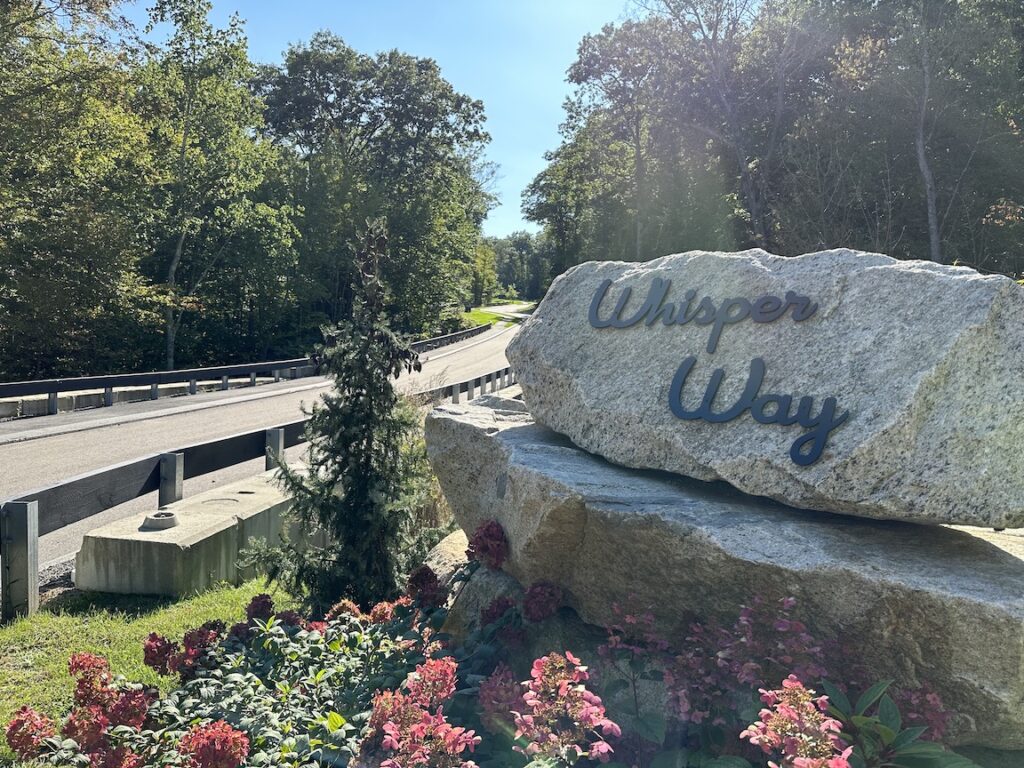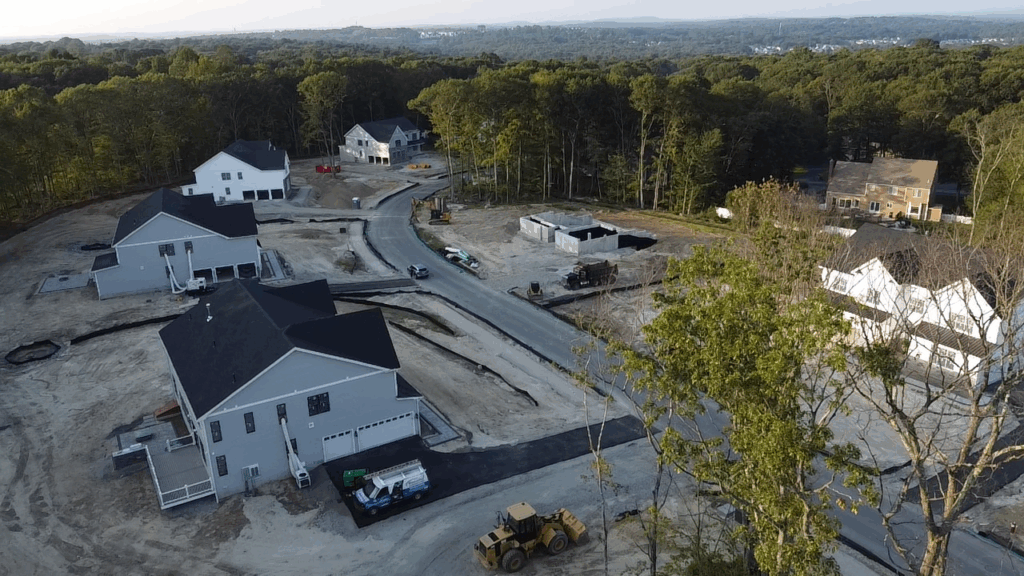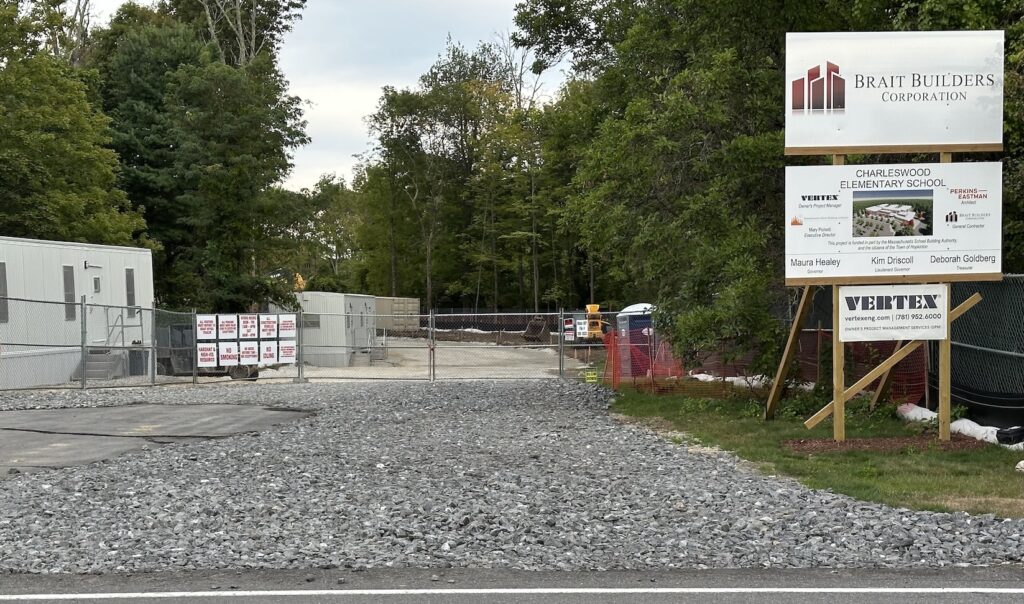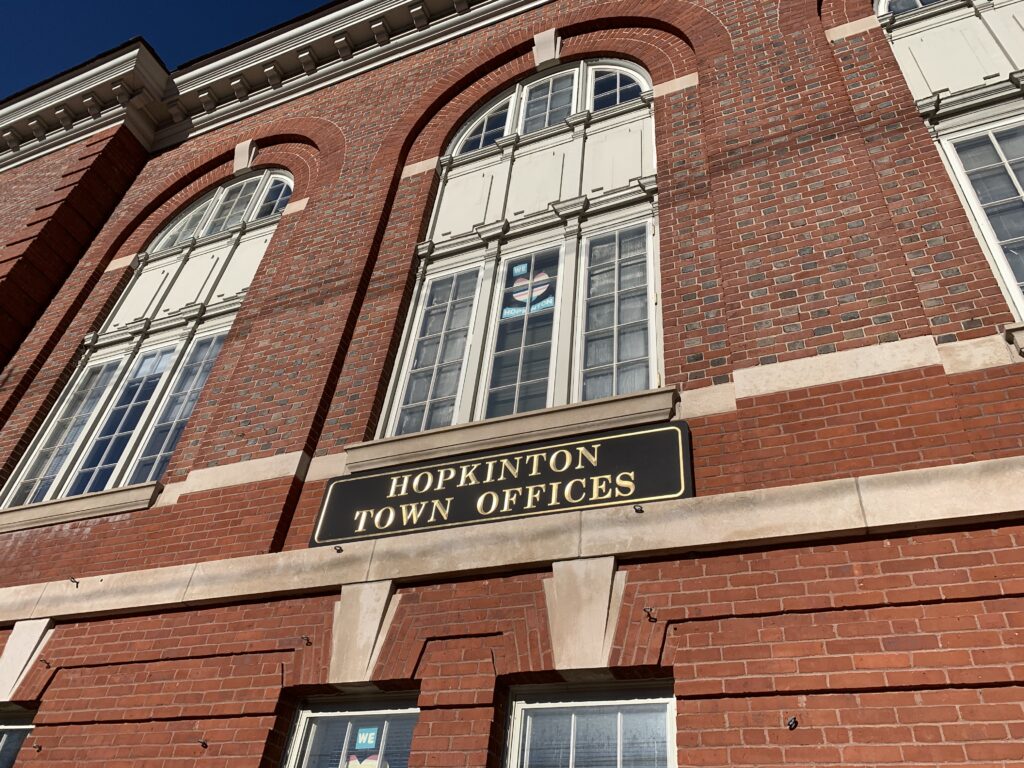The Conservation Commission at its meeting Tuesday night unanimously approved amendments to plans for The Trails that would modify its basins and allow the development to move forward.
The Trails, an open-space mixed use development (OSMUD) off Legacy Farms North Road, near the Ashland border, has been plagued by stormwater management issues that have negatively impacted the water system in Ashland, and violations were issued in the summer of 2021. Both the Conservation Commission and the Planning Board have been seeking plans to remedy the situation over the past several months. A peer consultant was brought in to review the stormwater management practices.
Conservation Administrator Kim Ciaramicoli shared a presentation to describe the project and the amendments proposed by project engineer Peter Bemis as he prepares to start the next phase of development. The two phases discussed are separated by a wetland area, and water tends to flow northward toward the Hopkinton Reservoir, near the Ashland Reservoir.
There are three large basins that serve as the main containers of stormwater, she explained. The third basin will impact the next development phase.
Some of the amendments proposed by Bemis and approved by town engineering consultant BETA Group “were already made in the field,” Ciaramicoli noted. The first was creating a constructed wetland behind Bandon Lane. It is located outside of the 50-foot no-disturb buffer and primarily is vegetated with cattails.
Modifications were proposed that would increase its storage volume. This also would allow the water to flow into the Hopkinton Reservoir via a large culvert. The water would be redirected to the east. Ciaramicoli said a large riprap apron would be required.
Chair Jeff Barnes noted that the previous request to increase the depth by 4 feet ultimately was not feasible because of the disturbance it would cause.
Bemis explained that the basin “was already constructed to its maximum depth.”
“The one thing that I can state to you emphatically is that this project originally designed versus what is constructed and will be constructed when we’re done is about 100 percent more volume for processing stormwater capacity than it was originally designed for.”
The embankment will be expanded, Bemis added.
Said Barnes: “It may not be ideal from a commission standpoint, but I just want to put a caveat and a footnote in here that this is something that Ashland is really pushing to get implemented at the site.”
The second amendment approved was for an infiltration basin behind 53-59 Weston Lane that previously was constructed. This basin collects water and takes it away from Wilson Street. Because this basin was not infiltrating properly, according to Ciaramicoli, Bemis proposed to modify it into a constructed wetland basin.
The third basin will be modified to increase its depth. It will require riprap expansion and will encroach into the 50-100-foot buffer area.
Ciaramicoli added that the Planning Board also is considering other modifications being made to the project.
One question Barnes had was about where the roof runoff drains. Bemis explained that each house has separate roof drains and foundation drains. Because the water runs downhill, “there is a combination of flow that will get there from certain units.”
For the homes that front Weston Lane, only the roof drains would be coming in because the foundations are lower, Bemis added.
Barnes clarified with Bemis that there is “a mechanical connection” with a 4-inch pipe.
As the discussion continued, Barnes stressed that the stormwater basin modifications should be completed before construction on the new phase of the development begins. In this new development, the stormwater management system should be put in before the units are built.
Bemis asked for permission to break ground on the new phase, and the commission approved of him doing site preparation work. Construction on the units cannot begin until the basin work is completed.
Said Bemis: “I understand the request.”
Vice chair Kerry Reed said that the first basin needs to be cleaned out. Bemis agreed that this will be done after the last five units in this phase of the project because he “didn’t want to compromise it a third time.”
A condition was added that Bemis work with BETA Group on the phasing plans on new construction prior to any site work as well as modifications made to the first basin.
Said Barnes: “There’s been good strides here and a good effort made by the applicant.”
A separate notice of intent on the project was continued until the next meeting on Tuesday, April 11. This meeting is to be held in person.
Turkey Ridge development makes progress
The Turkey Ridge Estates development at 52 Cedar Street Extension made significant progress on managing its stormwater issues after fines that had been held in abeyance were leveraged at the last meeting.
Ciaramicoli said she conducted an inspection on Tuesday and saw “major improvements at the site.” This inspection was conducted after a joint site walk with Conservation Commission and Planning Board members on Saturday.
Jute netting was used to stabilize a detention pond that had been overflowing, she added. The land was hydroseeded, and the grading work has been mostly completed.
The upper pond is under construction but “is starting to take form.” Other areas have been shored up, according to Ciaramicoli.
The area that had been breached twice before was well stabilized, she added.
Barnes recommended that the fines for the most recent violation on March 14 be held in abeyance because of the significant effort made to stabilize the site. This motion was approved unanimously.
Ciaramicoli stressed the need for construction sequencing, as was highlighted with The Trails. When issues are resolved, she will lift the cease and desist order for construction.
Rock climbing proposal discussed
Daniel Vickers, the owner of and head instructor at the Greater Boston Climbing School, appeared before the commission in January asking to use College Rock for commercial rock climbing instruction and guided trips. He is a member of the American Mountain Guides Association. He appeared before the Parks & Recreation Commission earlier in the month to explain his vision.
The College Rock property is under the purview of the Conservation Commission, Ciaramicoli said, and a conservation restriction has not been placed on it.
Vickers said “College Rock is a very obvious selection” for his course and group climbing sessions or privately guided trips with the Boy Scouts of America, for example. He wanted to have between two and eight people attend at a time.
He praised the rock quality there for trad climbing, which is a more traditional climbing form. Trad climbing has climbers use specialized devices to make their way up the terrain. He would like to offer four trips annually and some private requests for scout climbing badge days.
Barnes said that the town and the Conservation Commission should be included under the climbing school’s insurance policy. This will be discussed with town counsel.
Vickers said he wants to have a positive relationship with the community.
After a brief discussion, the commission continued the request until the next meeting to await feedback from town counsel and Parks & Rec.
Barnes said that the commission is “very enthusiastic” about the proposal.




















0 Comments